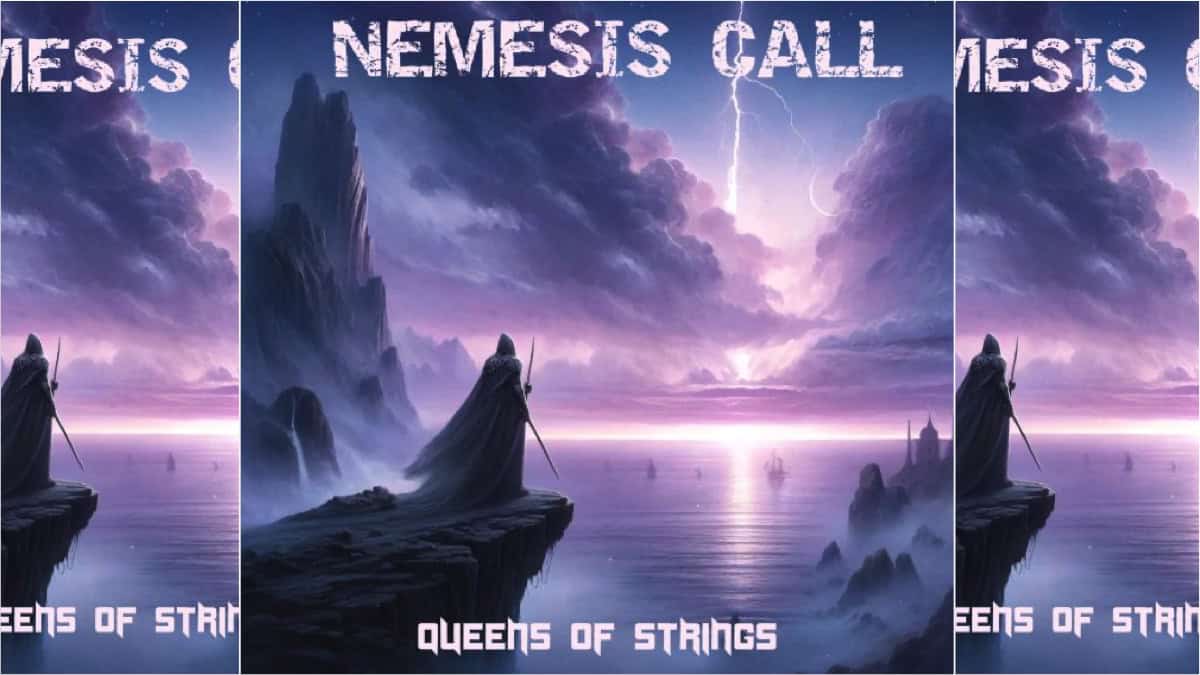Latest
The Importance of Ear Training: Part 3, Internalizing the Sounds of Phrases Created from the Shape
Hello again, and welcome back to the 3rd installment of my ear training series! I hope that you have been practicing diligently since the last installment… If you have, I’ll trust that you have progressed in leaps and bounds in making the vital connection between your ears and your hands.
This time around, I will be covering in further detail stage 3 of the 3 stage ear training process outlined in part 2 of this series:
Stage 1: Internalizing the sound of the complete shape
Stage 2: Internalizing the sounds of the individual notes within the shape
Stage 3: Internalizing the sounds of phrases created from the shape
If you’re just now tuning into this series, I recommend you take the time to first study parts 1 and 2 so you can get up to speed. Now, let’s get to work!
Stage 3: Internalizing the sounds of phrases created from the shape
As you might have already guessed, this is the most challenging of the 3 steps. Now instead of dealing with ear training scale degrees individually, we are going to cluster random groups of scale degrees together. This adds another level of difficulty because your internalization of the scale is dependent on your ability to hear, sing, and see random combinations of these tones on the bass without stumbling. This is also the step that exercises the most musical application of ear training, because mastery requires that you have the scale internalized to the point that you are able to hear and see phrases spontaneously that are completely derived from melody and not patterns. Completion of this step also signifies that you have digested this shape to the point of not having to think about making music with it on the gig or in the shed… Its sound flows from you naturally without need for mental analysis or forcing of patterns. This flow is what underlines a musician’s ability to effectively communicate through their instrument, regardless of it that instrument is a bass, guitar, violin, trumpet, or voice.
Recall that at the end of part 2, we focused on internalizing the sounds of each individual interval within a shape, specifically in a single octave of a major scale. Using that example, we were able to subsequently focus on ear training seven specific intervals:
root-2nd (major 2nd)
root-3rd (major 3rd)
root-4th (perfect 4th)
root-5th (perfect 5th)
root-6th (major 6th)
root-7th (major 7th)
root-octave (perfect octave)
Using these same intervals, we now will move to the next level by incorporating a new level of randomness in combination. The goal now will be to be able to naturally hear (and likewise, play accurately) complete phrases on your bass consisting of multiple notes and intervals. In keeping with an approach that progresses in difficulty, we want to start simple and then build from there. Once again, we will rely on the trusty major scale to demonstrate stage 3.
a) Start with random 2 note combinations. As with the prior stages, we will begin each drill with singing and playing the root of the scale to get oriented. After singing and playing the root, then attempt to sing randomized 2 note phrases. (The only difference between this approach and the one outlined at the end of part 2 is that for this example, you will not begin each 2 note combination from only the root. For example, you could sing the 2nd degree followed by the 5th degree, or the 6th scale degree followed by the 3rd.) After singing, then check your performance by playing that same 2 note combination on the bass. If you nailed it, then try another one, such as 3rd to 6th, or 7th to 2nd, octave to 5th, 4th to 6th, etc, etc. If you were not successful the first time, then sing the first note on its own, and check pitch on the bass before moving to the next note in the phrase. Use the same correction and ‘voice tuning’ tactics you used in stages 1 and 2.
Note: Obviously, if we were to change the scale or musical component used for ear training using these methods, the qualities of the intervals would change accordingly. You will need to keep this in mind as you progress outside of the major scale. Ultimately, within the scope and range of a single octave, you would need to be intimately familiar with ALL of the twelve chromatic intervals between the root and the octave:
minor 2nd
major 2nd
minor 3rd
major 3rd
perfect 4th
augmented 4th/diminished 5th
perfect 5th
augmented 5th/minor 6th
major 6th/diminished 7th
minor 7th
major 7th
perfect octave
b) Once you have gotten good at the 2 note combinations, then move onto 3 and 4 note groupings. By now, you should have the practice and training methods down. You are simply building on the concepts presented in steps 1 and 2, working at mastering more and more complex passages that you can simultaneously hear and play. In this exercise, you are still going to focus on just a purely linear approach. In other words, you don’t need to concern yourself as much with making great music with these combinations of notes. The more specific goal here is to build your pitch memory so that you know instantaneously the sounds of each interval within the octave you are working in.
c) When you can sing and play these larger groupings from part b) effectively, then you can graduate to longer, more musical phrases. This is where the ear training progress you have made will really manifest itself in your playing. It will especially make a huge difference in your improvisational and melodic abilities. For this part of the exercise, I really want you to try and focus on playing bass as melodically as a singer would sing. Try to think more about singing and playing ideas that are more conversational in nature. Use rhythm and dynamics as significantly as the actual melody notes that you choose. Sing with the same dynamics that you are spontaneously hearing. Make a real connection with your bass, so that it feels like a true extension of your mind. This is a place that is challenging to get to at first, but the payoffs are huge and rewarding once you can learn to walk into that “zone”.
As you may have already guessed, part c) is not something that is going to be mastered overnight. It represents the culmination of all of the key principles we’ve discussed so far, as they apply to your real-world ability to communicate on the bass. Although the exercise’s approach can be summed up in a single paragraph, its depth and implication speaks volumes. For most of us, this level of intimacy and communication that we seek through our music will be a lifelong pursuit. If you really are dedicated to finding this ‘precious zone,’ the importance of immersing yourself in as much music as possible can not be underestimated.
Other ear training methods and resources
Although I really believe this 3 stage process will help you considerably with your ear training, I highly recommend that you experience other methods, as well. Not only will other approaches open up your mind and your ears, it will keep you from becoming bored with a singular approach. I’ve always had better practice shed experiences whenever I’ve felt like I could enjoy more variety in my routine…
Transcription – Once you can navigate basic intervals effectively on your bass, try seeing if you can transcribe a melody or bassline from a song or musical phrase that you like. This will ultimately be a 2 step process: First, you will do your best to accurately learn and memorize the part on your bass just like the recording. For the next step, take the time to write it out on a staff so you can see the ‘shape’ and contour of the line. If you can’t read music yet, no problem. You will still get the benefits from having to associate what you hear with how it will look on your bass. (Incidentally, transcribing is a great way to help improve your reading, as well.) The fantastic thing about transcribing is that it forces you to figure out and internalize phrases on your bass that you normally would not have come up with on your own. This is absolutely fantastic for your ear training because it takes you out of your comfort zone and helps you to develop new muscle memory. As with any sound, progressive approach, start with very simple lines and phrases and build up your skills from there. In fact, since most recorded bass lines in full ensemble settings are somewhat challenging to hear in full detail, I would recommend starting with vocal melodies or sax melodies since they will be easier to make out. Furthermore, learning to phrase like a horn player or vocalist will make you an even more creative and melodic bassist.
Phrase dictation – If you have the ability to spend some practice time with another player, try playing the phrase dictation game. Without looking at the other player’s fingerboard, have him or her play a short phrase on their instrument 3 times in a row. Each time they play the phrase, sing it out loud so that you are able to memorize its pitches and movement. Then, try to play the phrase back on your bass. It’s okay if you have to stumble a little bit at first to find the pitches. After you think you have the phrase down, play it back to your musical partner and have them verify your accuracy. This is a really fun way to practice, and it will make a HUGE difference in your playing.
Melody-referenced interval recognition – Obviously, your ability to recognize intervals will help you in many aspects of your musicianship. Some players learn relative pitch by associating each possible interval with the first two notes of a popular song. For example, the first 2 notes of “When The Saints Go Marching In” form a major 3rd. Likewise, the first 2 notes of the popular cartoon, “The Simpsons” opening theme form a diminished 5th/augmented 4th. There is a neat free online ear training program that’s used specifically for associating intervals to songs. You can check it out at www.trainear.com.
Finally, I’d be remiss if I didn’t offer a shameless plug for my own online contribution, MusicDojo. MusicDojo is an interactive, online music school that offers a curriculum for bass players that includes intensive ear training courses, in addition to courses covering improvisation, music theory, styles, sightreading, and technique. Find out what’s currently being offered at: www.musicdojo.com.
Well, that brings us to the close of this series. I hope these lessons have opened your eyes (and ears) to a fresh philosophy and new approach to connecting the auditory with the visual. It is my sincere hope that the time you spend becoming more intimately connected to your bass will result in you attaining a completely new level in your musicianship and bring you even more joy when you play!
As always, practice hard, and play every note like it is your last.
Until next time,
Adam Nitti
Gear News
New Gear: Spector Doug Wimbish USA Custom Series Basses

Spector offers Doug Wimbish USA Custom Series basses…
Spector, a leading authority in bass guitar design, unveils two new Doug Wimbish USA Custom Series basses. Synonymous with bass excellence since 1987, Wimbish collaborated with Spector’s USA Custom Shop to create the DW-4 and DW-5 models, echoing the iconic instruments that have been favored heavily throughout his recording and performing career.
These signature basses faithfully replicate Wimbish’s originals, down to the smallest details like neck contours and nut widths. Customized EMG pickups, developed in collaboration with Wimbish, capture the distinctive sound that has shaped his monumental musical impact. These models invite players to explore the feel and response that have defined Wimbish’s signature style over the years.
Available in 4-string and 5-string versions, each model boasts unique features & finish options. The DW-4 comes in Amber Stain Gloss and Black Stain Gloss options, while the DW-5 offers Dark Blue Stain Gloss and Faded Natural Gloss. Every purchase includes a certificate of authenticity signed by Doug Wimbish. Wimbish comments, “Spector took the time to get every little nuance right, and that to me is dedication and being thoughtful enough to know ‘I want to nail it,’ and they did. I’m able to pick these instruments up for the first time and play them like I’ve already had them for years.”
For more information, visit spectorbass.com/doug-wimbish-usa-signature-series/.
Photo: Doug Wimbish, pictured with the new Spector Doug Wimbish USA Custom Series basses
Bass CDs
New Campaign: Alberto Rigoni, Nemesis Call – Queens Of Strings

Italian bass master and composer ALBERTO RIGONI is thrilled to announce his brand new project “Nemesis Call – Queens Of Strings”.
Nemesis Call – Queens Of Strings features a super talented drummer from Japan (TBA) and tons of female guitarists such as SAKI, Giusy Busetto, Alexandra Zerner (TBC) and many many others (TBA). Furthermore, Alberto has also launched a Fundraising Campaign for the project. 20% of the income will be donated to Lega del Filo d’Oro legadelfilodoro.it/it, an Italian association that helps deaf and blind children!
Alberto shares:
“Hello friends and music lovers! I’m Alberto Rigoni, an Italian composer and.. a BASS GUY! Between 2008 and 2024 I released 13 solo albums, spanning from progressive, rock, ambient to funky and experimental music, which also features contributions from musicians such as keyboard wizard Jordan Rudess (Dream Theater) drummer Gavin Harrison (Porcupine Tree) and Marco Minnemann (the Aristocrats), keyboardist Kevin Moore (ex Dream Theater), singer John Jeff Soto (ex Goran Edman (ex Y. Malmsteen), bassists Nathan East, Stu Hamm (Joe Satriani), Nik West (ex Prince) and many others. I’m also bass player for BAD As, Sunset Groove Society, Kim Bingham, The Italians bands and co-producer of Mistheria’s Vivaldi Metal Project.”
Alberto on the new project Nemesis Call:
“Even if my latest album “Unexpected Lullabies”, dedicated to my newborn Vittoria Parini Rigoni, will be released on June 4th, 2024, when Vittoria came to life I felt the need to compose new music (yes, I really can’t stop!!!!!). This time will be quite challenging because I’m willing to release an instrumental ambient/prog/rock/metal album, that will feature a talented and young drummer (TBA) and tons of female guitarists (that’s why I will call the album “Queens of the Strings”) such as Alexandra Zerner, YOKA and many others (TBA/TBC)). It won’t be easy to manage all such great musicians but I will make it!! Are you ready to face a new prog experience? The album will be released in Digipack CD and in high-quality digital format approximately at the beginning of 2025.”
The Fundraising Campaign:
As an independent artist, Alberto is looking for supporters who can help him reach the budget for the production (recordings, mix, mastering, artwork etc.) of this new album and has started this fundraising campaign that will end successfully on October 15th, 2024.
Get further information about Alberto Rigoni’s new project Nemesis Call Fundraising campaign at albertorigoni.net/nemesiscal
Bass Videos
Artist Update With Bassist Derek Frank

Bassist Derek Frank…
Many of you will remember the last time I chatted with Derek Frank was back in 2017. The main thing that impressed me was how busy Derek was and how he juggled playing with many huge acts.
Now, I am happy to hear that Derek launched a new album last March titled “Origin Story” where he digs deep into his roots and pays homage to Pittsburg.
Join me as we get caught up after all these years and hear the details about the new album, how Derek gets his sound, and his plans for the future.
Photo, Stephen Bradley
Featured Videos:
Visit Online:
www.derekfrank.com
www.instagram.com/derekfrankbass
www.youtube.com/derekfrankbass
www.facebook.com/derekfrankbass
Latest
This Week’s Top 10 Basses on Instagram

Check out our top 10 favorite basses on Instagram this week…
Click to follow Bass Musician on Instagram @bassmusicianmag
FEATURED @foderaguitars @bqwbassguitar @lecomptebass @xvector_basses @vuorensaku_guitars @phdbassguitars @meridian_guitars @sterlingbymusicman @ramabass.ok @overwaterbasses
Gear News
New Gear: Alberto Rigoni Signature Bass, the VPR5 by Gaetano Costanzo!

Alberto Rigoni Signature Bass, the VPR5 by Gaetano Costanzo!
Internationally renowned bassist ALBERTO RIGONI (soloist, BAD AS, Vivaldi Metal Project, TwinSpirits, etc.) is proud to announce the release of his signature bass VPR5 made by renowned Italian luthier Gaetano Costanzo!
The bass is entirely handmade in Italy, without the use of CNC or other machinery, and has rather special features. The VPR is a 5-string bass (but also available as a 4-string) with 30 frets, Seymour Duncan pickups, Music Man Alnico style, passive electronics (volume, tone and a switch to select series/parallel/single-coil mode), alder body, and American maple neck and fingerboard. Gotoh tuners that ensure perfect intonation. The bass is totally painted white (nitro finish) but other colors can be requested. The VPR has a weight of about 2.9 kg and suitable for any genre.
For more information contact Gaetanobass77@gmail.com or visit online at www.instagram.com/gaetanocostanzoluthier or www.facebook.com/GaetanoCostanzoLuthier














